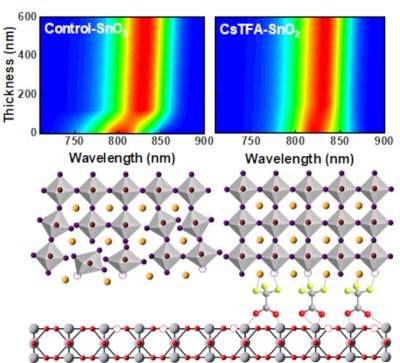Researchers from Korea's Ulsan National Institute of Science and Technology (UNIST) have addressed critical challenges in perovskite solar cells (PSCs), significantly enhancing both their efficiency and stability. The team achieved precise control over ion arrangement and reduced structural irregularities by incorporating a bidirectional coordinator between the perovskite photoactive layer and the electron transport layer.
Image credit: UNIST
The research team introduced trifluoroacetate (TFA-) ions between the perovskite layer and the tin oxide substrate, which serves as the electron transport layer (ETL), to mitigate defects.
The carboxylate group (-COO-) of TFA- firmly bonds with the tin oxide, enhancing structural stability. Simultaneously, the organic head group (-CF3) effectively reduces defects through bidirectional molecular tuning that interacts with the perovskite layer.
This approach allowed the research team to control the irregular structure of the perovskite thin film, substantially improving charge carrier mobility. The resulting perovskite films, characterized by the absence of buried interfaces and minimized tensile strain, achieved a power conversion efficiency (PCE) of 25.60%. Moreover, the unencapsulated device maintained over 80% of its initial PCE even under prolonged light exposure after 1000 hours.
Professor Dong Suk Kim remarked: “This groundbreaking bidirectional coordination strategy reveals a promising pathway to enhance high efficiency and confront the persistent challenge of addressing long-term stability concerns.” He added, “This achievement will further enhance the commercialization potential of PSCs.”




